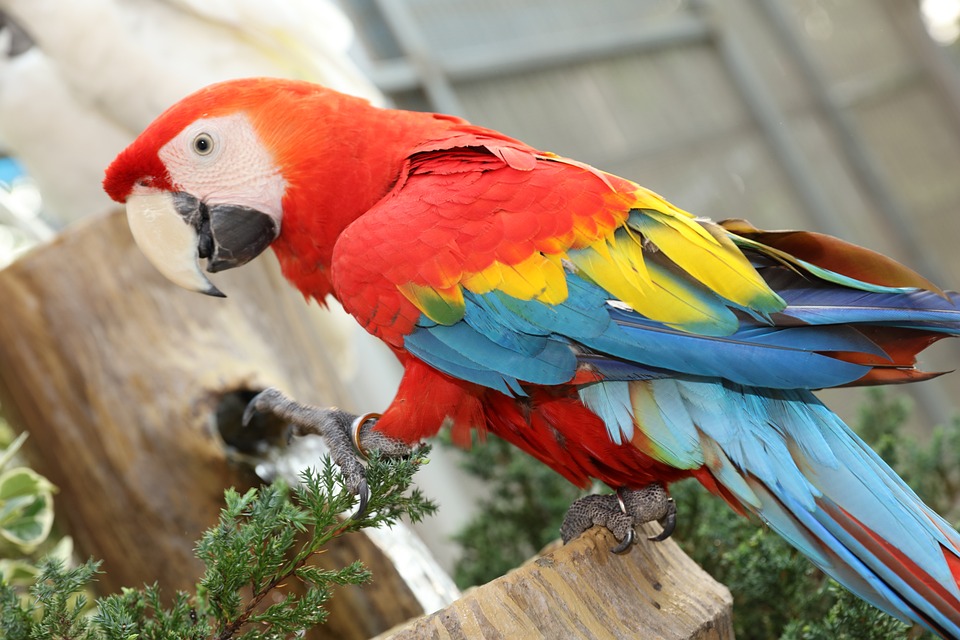Parrot training is a crucial aspect of keeping your feathered friend mentally stimulated and well-behaved. Using positive reinforcement techniques not only helps in shaping desired behaviors but also promotes a strong bond between you and your parrot. In this article, we will explore effective methods of using positive reinforcement to maintain motivation in parrots.
Understanding Positive Reinforcement
Positive reinforcement involves rewarding behaviors that you want to encourage in your parrot. This training method relies on the principle that animals are more likely to repeat behaviors that result in pleasant consequences. By using positive reinforcement, you can motivate your parrot to engage in desired behaviors and discourage unwanted ones.
Choosing the Right Rewards
To effectively use positive reinforcement, it is important to choose rewards that are highly motivating for your parrot. Each parrot has unique preferences, so experiment with a variety of rewards to find what your bird finds most enticing. Common rewards include tasty treats, verbal praise, petting, and access to favorite toys.
Identifying and Timing Rewards
One key aspect of positive reinforcement is timing. It is crucial to provide the reward immediately after the desired behavior occurs. This helps your parrot associate the reward with the specific behavior you want to reinforce. By being prompt in rewarding, you reinforce the connection between the behavior and the positive consequence.
Shaping Desired Behaviors
Parrot training often involves shaping behaviors gradually. Start by rewarding small steps towards the desired behavior. For instance, if you want your parrot to step onto your hand, begin by rewarding them for approaching your hand, then for touching it, and gradually for stepping on it. This gradual approach helps your parrot understand what is expected and keeps them motivated to continue learning.
Maintaining Consistency
Consistency is key when using positive reinforcement. Ensure that everyone interacting with your parrot follows the same training techniques and rewards. Inconsistency can confuse your parrot and hinder progress. Additionally, be consistent in your timing and frequency of rewards, as this helps maintain motivation and reinforces the desired behaviors.
Avoiding Punishment
When using positive reinforcement, it is important to avoid punishment. Punishment can create fear, stress, and damage the trust between you and your parrot. Instead, focus on rewarding desired behaviors and redirecting unwanted behaviors. If your parrot engages in unwanted behaviors, distract them with an alternative behavior and reward them for it.
FAQs
Q: How long does it take to train a parrot using positive reinforcement?
A: The training duration can vary depending on the parrot’s species, age, and individual personality. Some simple behaviors can be learned in a few training sessions, while more complex behaviors may take weeks or even months.
Q: Can positive reinforcement be used for older parrots?
A: Absolutely! Parrots of all ages can benefit from positive reinforcement training. With patience and consistency, older parrots can learn new behaviors and improve their overall behavior.
Q: What if my parrot doesn’t seem motivated by the rewards I offer?
A: If your parrot doesn’t respond well to the rewards you initially provide, try experimenting with different treats or rewards. Some parrots may prefer certain types of treats or toys over others. It may take some trial and error to find what motivates your specific parrot.
Q: Can positive reinforcement training be used to correct aggressive behavior in parrots?
A: Positive reinforcement can be helpful in addressing aggressive behavior in parrots. However, it is important to seek guidance from a professional avian behaviorist or veterinarian experienced in parrot behavior if your parrot has aggression issues.
In conclusion, positive reinforcement is a powerful tool for maintaining motivation in parrots during training. By understanding the principles of positive reinforcement, choosing the right rewards, and being consistent, you can effectively shape desired behaviors and strengthen the bond with your parrot. Remember to always approach training with patience, respect, and love for your feathered companion.









